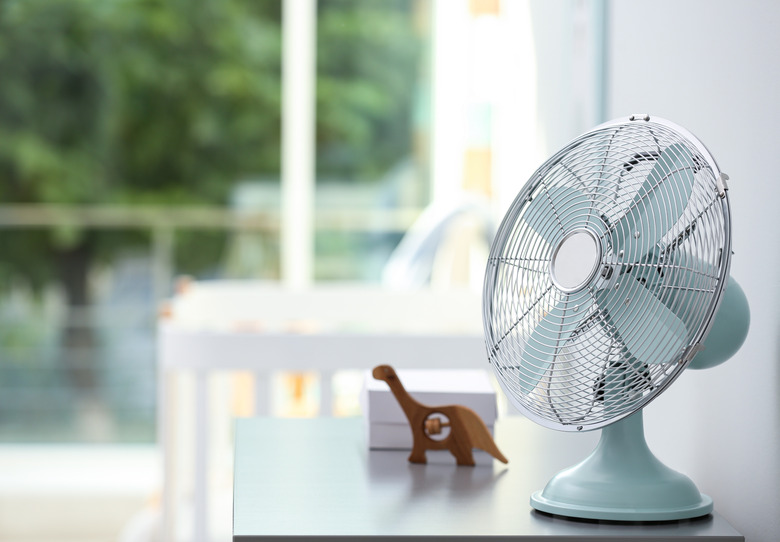7 Ways To Make An Oscillating Fan Quieter
We may receive a commission on purchases made from links.
Oscillating fans can be a godsend, especially during the dog days of summer. Designed to swivel side to side, up and down, or both, they push air around the room to create a natural breeze that will help you survive a heat wave. But along with helping you to stay cool, oscillating fans can also be prone to droning, clicking, whirling, and rattling, sometimes to the point of driving you up the wall!
Like most mechanical devices, fans need to be tuned up and maintained from time to time. An oscillating fan's parts can wear out and stop turning, or screws can become loose, causing the clatter. From tower to standing to desktop, if your blower is making a racket, here are some clever ways to make an oscillating fan quieter.
1. Clean the Fan Blades
1. Clean the Fan Blades
One of the easiest fixes for a loud fan is periodically cleaning it. When there's dust buildup on the blades, it can knock the oscillating fan off-kilter, producing a symphony of whirling and knocking. Dirt that has accumulated can also overtax the fan's bearings, which could result in noisy operation. Once a month or so, take the fan apart and wipe the dirt and dust from the blades with a damp sponge or rag. Then put it back together.
2. Keep It Level
2. Keep It Level
Why does a fan make a clicking noise when oscillating? It could be that the fan is sitting on an unlevel surface, such as warped floorboards, a tilted table, or an uneven desk, causing the base to rock slightly, annoyingly tapping the surface underneath over and over. The remedy is to move the fan to a flat spot so that the weight of the blades is distributed more evenly. Adjust the fan placement until the clicking stops.
3. Place It on the Carpet
3. Place It on the Carpet
Another way to silence an oscillating fan is to muffle the clanking sounds by placing it on a thick carpet or rug — a soundproofing mechanism that dampens and absorbs noise to some extent. It's a simple approach that works pretty well; plus your downstairs neighbors will thank you.
4. Buy Anti-Vibration Pads
4. Buy Anti-Vibration Pads
If you don't have carpeting in your home or if the cushioning under the base of your fan is missing or has thinned, you can purchase anti-vibration pads. Typically made of rubber or cork, they should be placed between the base of the fan and the desk, table, or floor to absorb the fan's vibration and with it, the sound.
5. Tighten Nuts and Bolts
5. Tighten Nuts and Bolts
Over time, a fan's external parts (not the internal motor) can work themselves loose. Inspect the fan to see if guards/cages are taut and housings are properly attached. If the whirring sounds continue after retightening, disassemble the fan and check the alignment of the fan blades.
6. Lubricate the Motor
6. Lubricate the Motor
Many newer fans don't allow access to the inside of the motor, but if you have one that does, you can apply a synthetic lubricant to the motor's moving parts. Use no more than two drops at a time or you could risk damaging the motor.
7. Buy a New Fan
7. Buy a New Fan
Sometimes, a fan has worn out or is just too old and can't be repaired. In this case, it makes sense to cut your losses and buy a brand-new, quieter model, like a Lasko tower fan.
Tip
Noise-free fan hacks include wedging a piece of cardboard or a shim under the guard's edges to keep the guard from shifting or adding a drop of silicone sealant on the decorative cap on the front of the guard to stop it from jiggling.
Warning
Never leave a fan running near unattended kids or pets and always unplug it before cleaning or making repairs.
